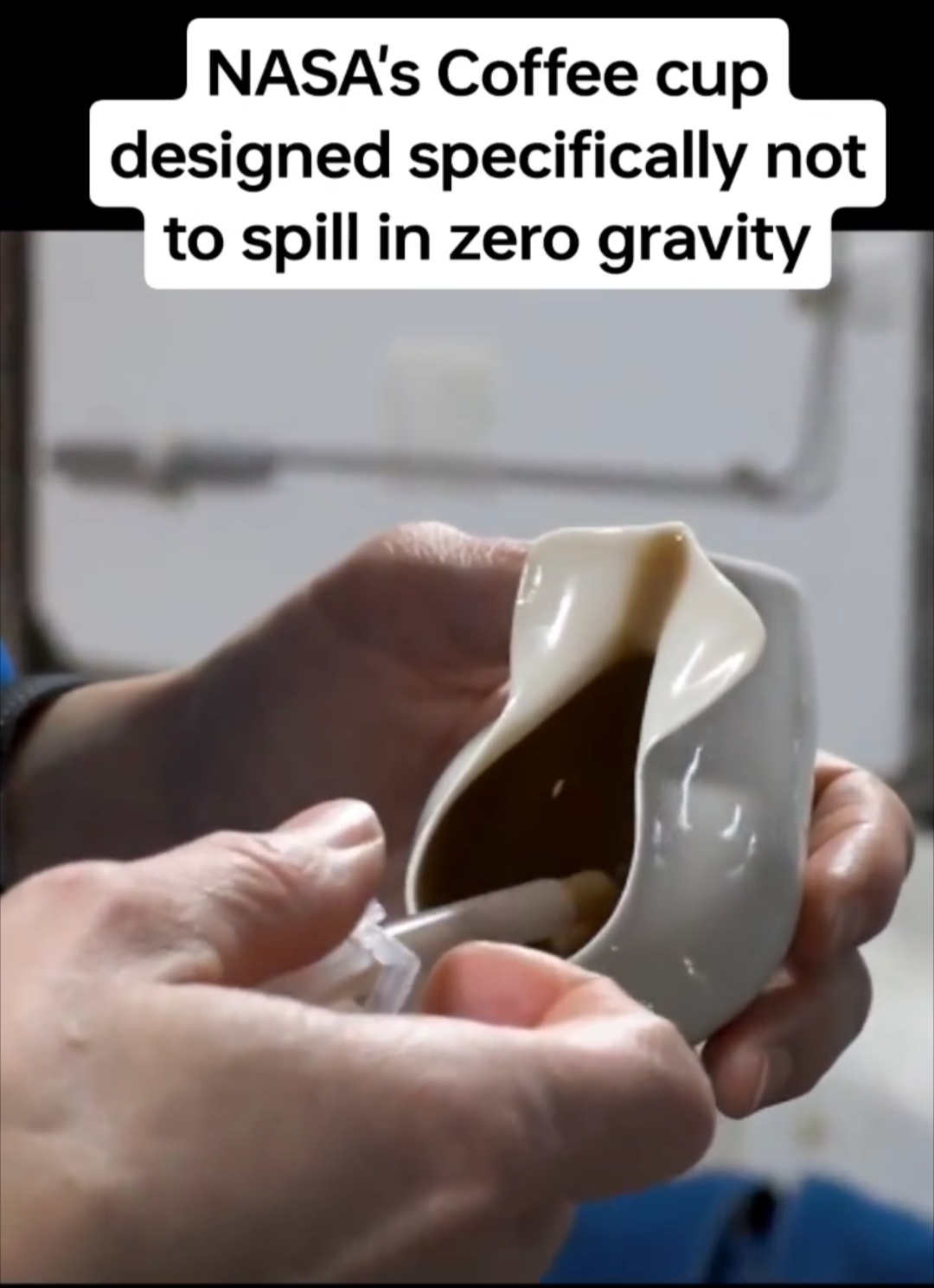The whispering eye
Mildly Interesting
This is for strictly mildly interesting material. If it's too interesting, it doesn't belong. If it's not interesting, it doesn't belong.
This is obviously an objective criteria, so the mods are always right. Or maybe mildly right? Ahh.. what do we know?
Just post some stuff and don't spam.
Don't put your dick in that
You clearly haven't been stuck on a space station for a few weeks with that kind of advice.
for a moment I thought it was a cute looking ash tray and the dude was holding a cig
Now, find the little man in the boat.
Ah yes that thing where you design something based on something in nature that does what you want...
Vajoina
Covert stuff
😏
finna buss
Why not use a sippy cup like a toddler uses? They have these ones with little plastic membranes on top, that when you apply a bit of pressure open up and release the liquid at that point.
I'd imagine that it's because there's complications when being used in microgravity. The people are literal rocket scientists and astrophysicists. I think they've got a good grasp on problem solving.
The same people who asked if 100 tampons was enough for 14 days might not have the best grasp on all things.
Maybe they’ve never even seen one of these devices before and never considered it, who knows.
I just read the book A City on Mars (which I recommend) and they talk about how that tampon anecdote gets spread around as if it shows how clueless NASA men are, but really it's an illustration of how risk averse NASA is. Basically, no one knew how menstruation would go in space. Because of microgravity other bodily functioning gets screwed up, so the engineers aimed for enough tampons to cover the worst possible bleeding and then added a 100% safety margin. That's what they were asking the female astronauts, does this bandolier of tampons fulfill that requirement. They do the same thing with other tolerances, like the inflatable habitat: will this thing take five times the expected air pressure without exploding?
Except that’s not what happened
“I remember the engineers trying to decide how many tampons should fly on a one-week flight; they asked, ‘Is 100 the right number?’” Ride recalled, according to the transcript. She replied that, “No, that would not be the right number.”
“They said, ‘Well, we want to be safe,’” continued Ride. “I said, ‘Well, you can cut that in half with no problem at all.’”
NASA engineers apparently had a history of sending women to space with inadequate supplies. In that same interview, Ride noted that the engineers had also decided that women astronauts would want makeup. So, they designed a makeup kit.
“The engineers at NASA, in their infinite wisdom, decided that women astronauts would want makeup — so they designed a makeup kit,”
I hope the authors won't mind if I post an excerpt here, they do a few paragraphs later give a different example of "NASA engineers not understanding female anatomy". Here's a little of the relevant section, which is itself more of an aside from the main subject of the book:
"Here’s the thing: Dr. Rhea Seddon, the only combination medical doctor, astronaut, and period-haver in the class of ’78, helped make the decision about how many tampons to include. According to a 2010 interview, the large number of tampons was a safety consideration. As she said, “There was concern about it. It was one of those unknowns. A lot of people predicted retrograde flow of menstrual blood, and it would get out in your abdomen, get peritonitis, and horrible things would happen.”
According to Seddon, the women were skeptical of the concerns, and their preference was not to treat it as a problem unless it became a problem. But she was involved with the final decision made with the flight surgeons, and according to her:
We had to do worst case. Tampons or pads, how many would you use if you had a heavy flow, five days or seven days of flow. Because we didn’t know how it would be different up there. What’s the max that you could use? Most of the women said, “I would never, ever use that many.” “Yes, but somebody else might. You sure don’t want to be worried about do I have enough.”
In other words, the story may have been less about idiot male techs and more about the NASA approach of solving all problems with more equipment. As Seddon remembers it, they decided to take the maximum amount they imagined a woman with a heavy period could need, multiplied that by two, and then added 50 percent more.
This would be typical NASA behavior—if you read the 1,300-page long Human Integration Design Handbook, which we unfortunately have, you will encounter the word “maximum” 257 times, as on page 604, which contains a remarkably detailed treatment of Number 1, including what you might call a peequation,
VU = 3 + 2t,
where VU is the maximum total urine output in liters per crewmember, and t is the number of days of the mission.
In the case of tampons, the excessive concern may have been appropriate. Lynn Sherr, longtime journalist, friend to a number of female astronauts, and also Sally Ride’s biographer, said the first woman who ever menstruated in space had problems with “leakage.” Remember, space is awful. There is no gravity to pull fluids in a generally downward direction. Blood, through a process called capillary action, tends to climb out.[*] According to Sherr, that anonymous astronaut elected to wear a tampon as well as a pad."
Release the liquid without gravity? I'm pretty sure any bottle design would need to be collapsible - basically becoming a bag at that point - to work in zero g, but maybe I misunderstand how these cups are supposed to work.
How I Met Your Mother guy: That's a vagina.
